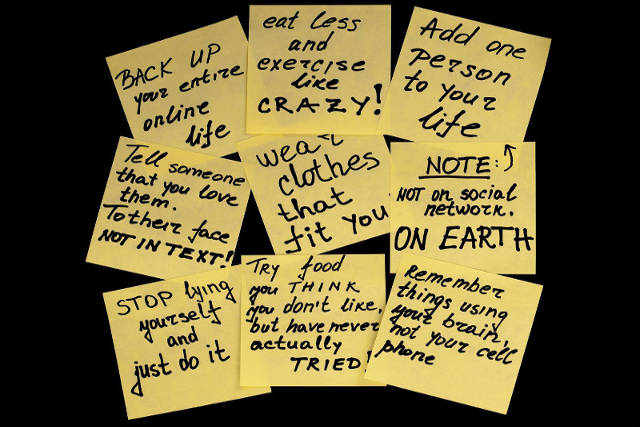“Finish what you started,” my mother told my 12-year-old self.
She was referring to the multiple projects, New Year’s resolutions and half-filled diaries that defined me as a great starter of things, who conjured grandiose plans and had big dreams – but who inevitably lost steam halfway, leaving behind a trail of unfinished goals in my wake.
Now that I have my own daughter, like many parents, I’m terribly afraid she’ll pick up my faults. We want our kids to be a million times better than we ever were: smarter, happier, more driven, focused, successful. Do you know what can help kids experience all that? If they’re able to set and achieve their goals.
Studies show that a student who can identify realistic goals and map out steps to reach them is more likely to score higher grades and experience lifelong well-being.

A Can-Do Attitude
To raise a goal-getter, the first thing to do is make sure that your little one believes in their own ability to achieve their goals. This is called self-efficacy.
A child with high self-efficacy has strong faith in their capabilities and is, therefore, more likely to try harder to accomplish tasks and deal with challenges. Keeping in line with that, a child with low self-efficacy is more likely to give up.
You could call this a self-fulfilling prophecy: Believe that you have what it takes and you’ll probably get it done. If you think you’re going to fail, you likely will.
According to a study in the Annual Review of Psychology, kids start forming beliefs about what they can and cannot achieve before they even reach their teenage years. That’s why it’s important to foster a can-do attitude from the beginning so that our children don’t settle on some goals while giving up on others too early.
Applaud and acknowledge your child’s efforts by saying things like, “You’re really good at going after what you want,” or “I see how hard you’re working at this. You’ve come a long way.”
Research shows that a child’s belief in their ability to reach a goal is essential to building a hopeful attitude and an optimistic outlook.
How to Teach Goal-setting
Follow this SMART plan to help your children set goals effectively.
Dream big, little one sounds cute and inspiring, but part of our job is giving our kids a healthy dose of reality. That doesn’t mean being negative, by any means. Let’s help them by providing encouraging, honest guidance. Kids often make big, sweeping goals like learning a new instrument or being really good at soccer: good goals, but goals that take a lot of work – and they’re not always aware of just how much.
Ever notice your child feeling discouraged when they fall short, then subsequently abandon the goal they were once so enthusiastic about? It’s a hard thing for parents to witness.
Here’s what you can do.
Help your kids identify Specific, Measurable, and Attainable goals with clear Results, breaking the goals into smaller steps, and setting a specific Time frame.

The SMART acronym is borrowed from a goal-setting program taught in several public schools in Virginia, U.S, all of which have seen positive outcomes with its students.
Start small
My favourite teacher taught me the magic of setting small, incremental goals. In primary school, my math scores were atrocious. After I got 65% on a test, she suggested that I aim for 75% next time. Once I obtained that, her answer was, “Great. Get 85% on your next test.” I managed to reach the final goal of 100%, and I did it by working my way up with many small “improve by 10%” goals along the way.
Jumping right to lofty goals can be overwhelming, which is why small goals are great: They provide ample encouragement while giving your kids the practice they need to tackle bigger goals down the road.
Let them take the lead
Ask your kid to write down a SMART goal that’s really coming from their heart. As much as you might want their goal to be, “Get better test scores,” remember that children should come up with what they want to achieve. Why is it crucial that it comes from them, and not you? Because the more passionate they are about the matter, the harder they’ll work at it. They need to genuinely care – otherwise, what’s the point?
Make a game plan
Walk your kid through the following:
- Break the goal down into smaller steps, and write them down.
- Write down what skills they must learn in order to realize their goal.
- Anticipate what roadblocks or struggles they might face along the way. Ask your child how they plan to overcome them. For example, they might have to sacrifice spending time with their friends or cut down on computer games in order to make room for studying or practising. Ask, “Are you prepared for that?
- Settle on a strategy to track their progress. You can mark these small achievements with mini prizes like stickers, their favourite meal, or a fun celebratory outing – as an encouragement to keep up the good work!
- Determine and write down a target date for achieving their final goal.
As your child masters the art of setting and achieving goals, they’ll improve in all areas of life, be it academic pursuits, extracurricular activities, personal development, or team-leading. Everyone is a goal-getter in the making.
By Jenny Tai.
This is part of TNAP Value series. Stay tuned for my articles!
If you find this article useful, do click Like and Share at the bottom of the post, thank you.
Like what you see here? Get parenting tips and stories straight to your inbox! Join our mailing list here.

























































